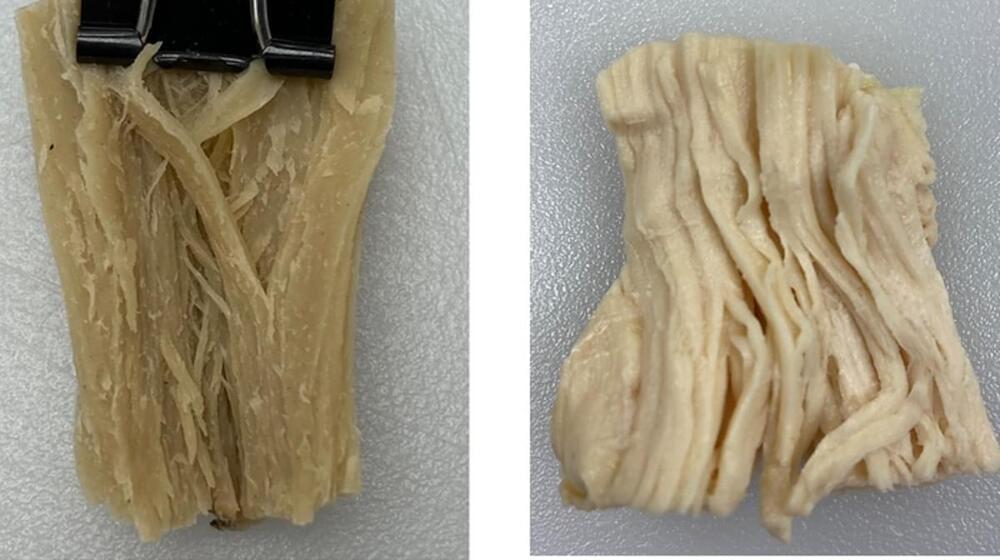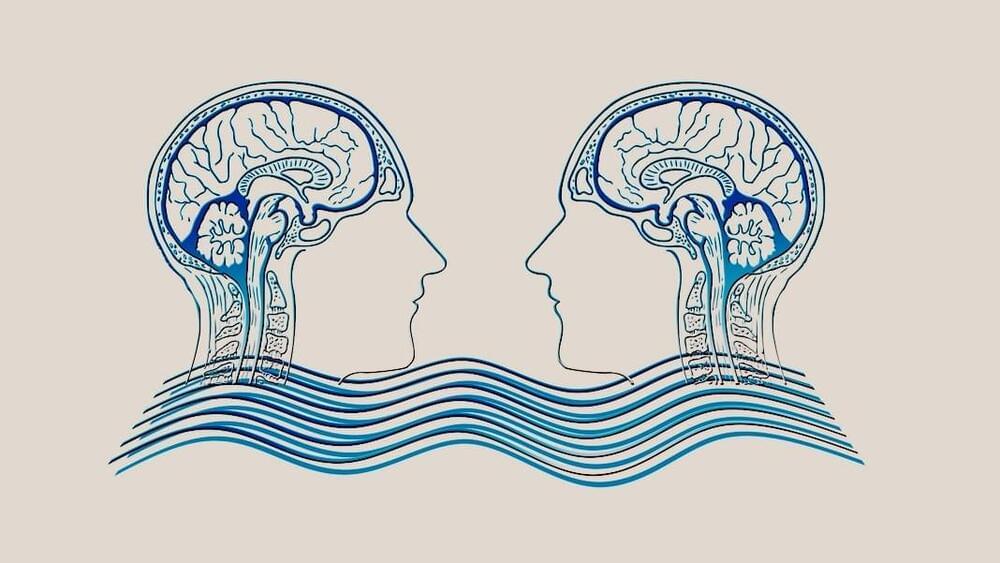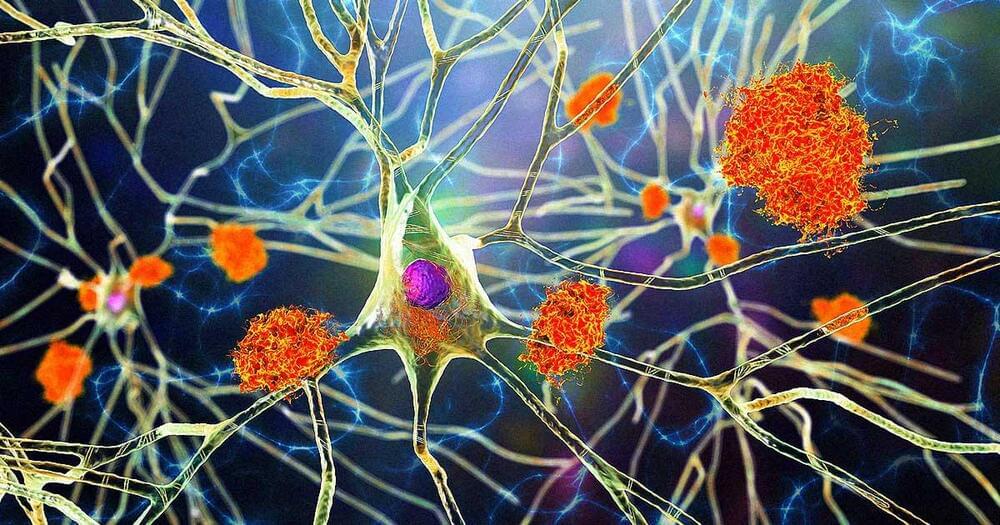Page 4610
Jun 28, 2022
What is synthetic biology and what’s its potential? These stories explain
Posted by Shubham Ghosh Roy in categories: bioengineering, biological
Synthetic biology is the engineering and redesign of biological systems and could have a range of applications in modern day life.
Jun 28, 2022
China looks to outer Solar System with nuclear Neptune orbiter
Posted by Alberto Lao in categories: nuclear energy, space
The mission proposal calls for nuclear fission power. Breakthroughs would boost China’s overall exploration capabilities.
Jun 28, 2022
How to See the Giant Comet Heading Our Way Soon
Posted by Alberto Lao in categories: asteroid/comet impacts, existential risks
One of the largest comets known is approaching our planet on the only trip through the inner solar system it will make during our lifetimes.
Five years ago, the Hubble Space Telescope spotted a large comet at the farthest distance ever, as it was approaching the sun from way out between the orbits of Saturn and Uranus. Now, that giant space snowball is coming in for its closest pass by Earth in just a few weeks.
Comet C/2017 K2 will be at its nearest point to us on its current swing through the inner solar system on July 14. Even at its closest, however, it will still be farther away from us than the average distance between Earth and Mars. This will likely make it difficult to see the comet without at least a small telescope, despite its substantial stature.
Jun 28, 2022
Metasurfaces Open the Door to Telekinesis and Telepathy With Technology
Posted by Art Toegemann in categories: computing, internet, neuroscience
If you need the hardware.
A separate study used metasurfaces as a telephone of sorts to help two people text simple messages, all without lifting a finger.
Direct brain-to-brain communication isn’t new. Previous studies using non-invasive setups had participants playing 20 questions with their brain waves. Another study built a BrainNet for three volunteers, allowing them to play a Tetris-like game using brainwaves alone. The conduit for those mindmelds relied on cables and the internet. One new study asked if metasurfaces could do the same.
Continue reading “Metasurfaces Open the Door to Telekinesis and Telepathy With Technology” »
Jun 28, 2022
Astronomers spot signs of planets forming around dying stars
Posted by Shubham Ghosh Roy in categories: life extension, physics
Aging binary systems could be giving birth to second-generation planets.
When a Sun-like star exhausts the helium fuel in its core, it enters its death throes. Starved for fuel, it swells to a red giant, likely swallowing its innermost planets, and begins burning scraps of leftover hydrogen to helium. Periodically, these helium ashes reignite, causing the star to once again burn brightly and throw off its outer layers into space.
This volatile phase of stellar life is called the asymptotic giant branch (AGB). With so much happening, it would seem like a terrible environment for the delicate process of forming planets. But over the past couple decades, astronomers have begun to suspect that under some circumstances, this stage could result in a new disk of material surrounding the star, giving rise to a second generation of planets.
Continue reading “Astronomers spot signs of planets forming around dying stars” »
Jun 28, 2022
Physicists confront the neutron lifetime puzzle
Posted by Shubham Ghosh Roy in categories: chemistry, cosmology, internet, particle physics

To solve a long-standing puzzle about how long a neutron can “live” outside an atomic nucleus, physicists entertained a wild but testable theory positing the existence of a right-handed version of our left-handed universe. They designed a mind-bending experiment at the Department of Energy’s Oak Ridge National Laboratory to try to detect a particle that has been speculated but not spotted. If found, the theorized “mirror neutron”—a dark-matter twin to the neutron—could explain a discrepancy between answers from two types of neutron lifetime experiments and provide the first observation of dark matter.
“Dark matter remains one of the most important and puzzling questions in science—clear evidence we don’t understand all matter in nature,” said ORNL’s Leah Broussard, who led the study published in Physical Review Letters.
Continue reading “Physicists confront the neutron lifetime puzzle” »
Jun 28, 2022
Blood Pressure E-Tattoo Promises Continuous, Mobile Monitoring
Posted by Raphael Ramos in categories: biotech/medical, health
Blood pressure is one of the most important indicators of heart health, but it’s tough to frequently and reliably measure outside of a clinical setting. For decades, cuff-based devices that constrict around the arm to give a reading have been the gold standard. But now, researchers at The University of Texas at Austin and Texas A&M University have developed an electronic tattoo that can be worn comfortably on the wrist for hours and deliver continuous blood pressure measurements at an accuracy level exceeding nearly all available options on the market today.
“Blood pressure is the most important vital sign you can measure, but the methods to do it outside of the clinic passively, without a cuff, are very limited,” said Deji Akinwande, a professor in the Department of Electrical and Computer Engineering at UT Austin and one of the co-leaders of the project, which is documented in a new paper published today in Nature Nanotechnology.
High blood pressure can lead to serious heart conditions if left untreated. It can be hard to capture with a traditional blood pressure check because that only measures a moment in time, a single data point.
Jun 28, 2022
Engineers resolve single photons 70x faster than other techniques
Posted by Genevieve Klien in category: quantum physics
Jun 28, 2022
Weirdly, It Appears the Flu Vaccine May Protect Against Alzheimer’s
Posted by Genevieve Klien in categories: biotech/medical, health, neuroscience
In a surprise finding, researchers have found that getting at least one flu shot makes it 40 percent less likely for people over the age of 65 to be diagnosed with Alzheimer’s disease, up to four years later.
While it’s still far too early to determine if there are any direct causal links between the common vaccine and neurological health outcomes like Alzheimer’s — in other words, we don’t know if it’s the flu vaccine itself or something else responsible for the results — the research is certainly an eyebrow-raising new development that could, potentially, point in the direction of easily accessible treatments.
In a peer-reviewed study in the Journal of Alzheimer’s Disease, researchers at UTHealth Houston compared the incidence rate of the disease in patients with and without at least one flu vaccination in a nationwide sample of US adults aged 65 and up, which included 935,887 vaccinated and 935,887 non-vaccinated individuals.

















